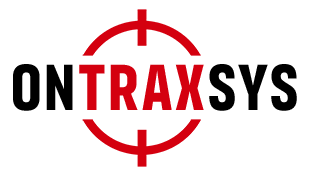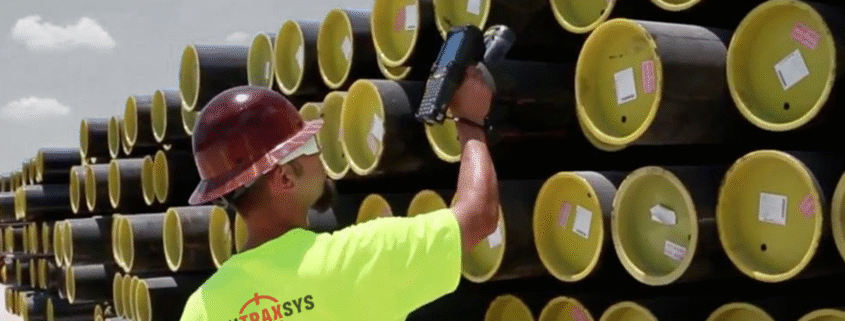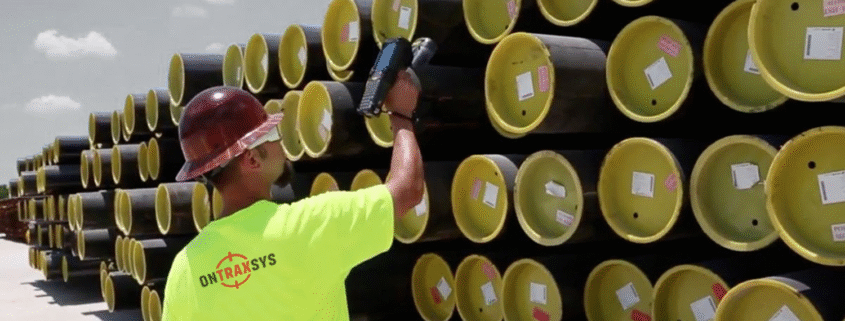Case Study: SMART Material Control™ for Critical Substation Modernization
Modernizing the Grid Through Precision in Material Control
In today’s utility landscape, modernizing substations isn’t just about new switchgear, relay panels, or SCADA systems; it’s about managing complexity. Capital project success now depends as much on Material Management discipline as it does on engineering excellence. That’s exactly where OnTraxSys’s SMART Material Control™ made the difference.
When a major utility embarked on a large-scale grid resiliency and substation modernization program, the company faced the same challenge most capital projects struggle with: materials. Thousands of line items. Hundreds of suppliers. Tight outage windows. And no room for mistakes.
OnTraxSys was brought in to implement its SMART Material Control™ framework; a structured, field-proven model for bringing order, traceability, and accountability to even the most complex Material Control environments. The goal wasn’t just to track inventory. It was to align every switchgear, relay, and transformer movement with project milestones, schedules, and commissioning windows.
Our Role in the Project
OnTraxSys supported the customer’s grid modernization initiative by embedding our SMART Material Control™ process directly into the construction workflow across seven critical substations. Each site represented a high-value investment in reliability, load capacity, and grid stability.
Our mission: streamline the movement of materials from procurement through commissioning while minimizing loss, delay, and misallocation. We oversaw the end-to-end material chain, managing components like switchgear, relay panels, transformers, grounding systems, and SCADA interface kits; each requiring different levels of QA/QC, secure storage, and handling.
With our Material Management model, we didn’t just receive and release items; we validated, staged, kitted, and tracked them using SMART Material Control™ protocols designed to ensure nothing left the yard without purpose or documentation.
Execution Strategy: Bringing SMART Material Control™ to Life
Implementing SMART Material Control™ isn’t a passive process. It’s hands-on, data-driven, and proactive by design. For this project, we built a customized control plan centered around three principles: visibility, accountability, and timing.
1. Precision QA/QC and Reconciliation
Our team conducted detailed inspections and reconciliations for over 1,200 critical assets across seven substations. These weren’t commodity materials; they were high-cost, long-lead components essential to commissioning success. By applying SMART Material Control™ tracking and daily reconciliation, we maintained over 99.1% BOM alignment accuracy, ensuring total confidence in the material ledger.
2. Project-Specific Kitting and Staging
Using the SMART Material Control™ framework, we developed material kitting plans that aligned directly with commissioning phases and outage schedules. This phase-based approach reduced search time at the field level by more than 20%, improving contractor productivity and readiness. Every kit was packaged, labeled, and delivered for a specific milestone; nothing random, nothing lost in translation.
3. Surplus Recovery and Reintegration
Many capital projects leak money through unmanaged surplus. We flipped that script. Through controlled issuance and return-to-stock processes, we recovered, inspected, and reintegrated over $1.2 million worth of usable material from prior jobsites. This surplus became verified, trackable inventory; an immediate cost avoidance win and proof of sustainable Material Management discipline in action.
4. Delivery Control and Just-in-Time Execution
Material congestion is a silent killer on capital projects. We implemented just-in-time (JIT) delivery to each substation, ensuring materials arrived when crews were ready; not weeks early to sit in weather-exposed laydown areas. Every shipment was verified, every load documented, and every delivery linked to a specific task, drastically reducing site clutter and safety risk.
Integration with Capital Project Management
Where most material systems operate in isolation, SMART Material Control™ was integrated directly into the utility’s Capital Project Management framework.
That integration allowed project controls, procurement, and construction management teams to work from the same source of truth. Real-time material visibility supported better decision-making; whether validating readiness for energization, tracking long-lead items, or managing close-out documentation.
By fusing Material Management data into the broader capital program, OnTraxSys enabled financial and operational alignment that’s rare in the industry. The project wasn’t just about counting parts; it was about controlling capital.
Performance Metrics That Matter
Unlike theoretical management systems, SMART Material Control™ is measured in hard numbers, not buzzwords. Here’s what our approach delivered across the seven substation modernization sites:
- $1.2M in cost avoidance through surplus recovery and material reintegration
- Greater than 99.1% BOM alignment accuracy maintained through daily reconciliation
- 20% reduction in field search and handling time via phase-based kitting
- 10% reduction in late or misrouted deliveries, lowering outage window risk
- 100% traceability for every serialized component from dock to install
- Zero schedule delays tied to material unavailability
In an environment where every outage hour has a dollar value, those metrics translate directly to margin protection and performance reliability.
Cultural Fit: Veteran-Led Accountability
A big reason SMART Material Control™ works is the people behind it. OnTraxSys is a veteran-owned company, and we bring that mindset; discipline, clarity, accountability; to every yard, laydown, and substation.
Our teams operate like field logistics units: every movement tracked, every deviation logged, every corrective action immediate. That’s how we maintain the integrity of Material Control under pressure. It’s not theoretical; it’s operational. And it’s repeatable across multiple utility environments.
The Customer’s Challenge, Solved
Before OnTraxSys deployed its system, the customer’s substation modernization program was burdened by fragmented logistics, inconsistent data, and time-consuming reconciliations. Crews often wasted hours searching for materials, replacements were ordered unnecessarily, and surplus was left idle in storage yards.
By deploying SMART Material Control™, the customer achieved clarity and command over its entire Material Management process.
They moved from reactive expediting to proactive control; achieving on-time commissioning, validated cost savings, and transparent audit trails that strengthened regulatory and financial reporting.
Operational and Financial Outcomes
When we look beyond the metrics, the value of SMART Material Control™ lies in its cumulative effect on Capital Project Management:
- Predictable execution: crews work from confirmed kitted packages that match each construction phase
- Improved field productivity: fewer stoppages, less rework, faster turnarounds
- Tighter cost control: verified chain-of-custody eliminates loss, theft, and unnecessary reorder risk
- Smoother commissioning: verified materials align directly with testing and energization schedules
- Auditable transparency: daily reconciliation reports and chain-of-custody documentation that withstand compliance scrutiny
Ultimately, this system transformed how the utility executed high-risk substation upgrades; from a reactive material scramble to a synchronized, data-backed operational rhythm.
The SMART Material Control™ Advantage
The “SMART” in SMART Material Control™ isn’t marketing; it’s an operating discipline:
- S – Staged by Phase: Materials are organized and deployed in alignment with project milestones.
- M – Mobile-Scanned: Every movement is digitally logged, tracked, and verifiable.
- A – Accountable: Each transaction has a responsible party and auditable record.
- R – Reconciled: BOMs and field inventories are matched daily for accuracy.
- T – Transparent: Project teams have real-time visibility from PO to installation.
That’s how OnTraxSys ensures that Material Control and Material Management become value generators, not cost centers, inside major Capital Project Management programs.
Beyond Substations: A Scalable Model for Capital Projects
While this case focused on substation modernization, the SMART Material Control™ framework scales easily across generation sites, transmission programs, and large industrial EPC projects. Whether it’s a 345 kV expansion, battery energy storage site, or a gas peaker plant, the principles remain constant: track it, verify it, and control it.
Each deployment reinforces the same truth; capital performance begins with material control. Every delay, claim, or cost overrun can usually be traced back to something that wasn’t staged, scanned, or reconciled when it should have been. SMART Material Control™ closes that loop before it opens.
A Proven Return on Control
In complex Capital Project Management, uncertainty is expensive. OnTraxSys reduces that uncertainty by applying a disciplined approach to Material Management; turning chaos into data, and data into decisions.
Across this project, we didn’t just deliver materials; we delivered control, predictability, and savings that scaled beyond the job itself. The lessons learned here have already informed the customer’s future capital programs, setting a new internal benchmark for material accountability.
Conclusion: The 1% That Protects the 99%
In high-stakes grid modernization, the smallest percentage of spend; materials oversight; can determine 100% of the outcome. That’s why SMART Material Control™ has become the defining standard for utilities that value control as much as construction.
With validated savings, measurable productivity gains, and unmatched transparency, OnTraxSys continues to set the benchmark for Material Management, Material Control, and Capital Project Management excellence across the power sector.
Schedule a SMART Material Control™ Consultation
Ready to see how OnTraxSys can bring the same level of precision and control to your next capital project?
Let’s talk.
Schedule a SMART Material Control™ consultation and discover how a structured, transparent, and accountable approach can reduce cost, risk, and chaos; while improving performance where it matters most.







